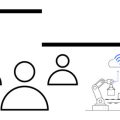Introduction to Vocal Cord Disorders
Vocal cord disorders are health conditions that affect the voice box, also known as the larynx. These disorders can change the way you sound when you speak, making your voice hoarse, weak, or even causing you to lose your voice completely. For many Americans, our voices are essential for everyday life—whether were talking with family, teaching in a classroom, working in customer service, or simply chatting with friends. When something goes wrong with our vocal cords, it can seriously impact how we communicate and connect with others.
Why Understanding Vocal Cord Disorders Matters
In the United States, millions of people experience problems with their vocal cords every year. These issues dont just affect singers or public speakers—they can happen to anyone. Knowing about vocal cord disorders is important because:
- Communication: Our voices help us share ideas and express ourselves. Vocal problems can make this challenging or even impossible.
- Work and School: Many jobs require speaking clearly, like teachers, salespeople, healthcare workers, and more. Voice issues can lead to missed workdays or trouble performing job duties.
- Quality of Life: Not being able to speak comfortably can lead to frustration, embarrassment, and social isolation.
Common Impacts of Vocal Cord Disorders
| Area of Life | Impact |
|---|---|
| Communication | Difficulties being understood; need to repeat oneself often |
| Employment | Challenges in jobs that require speaking; possible lost income |
| Social Interactions | Avoiding gatherings due to voice strain or embarrassment |
| Mental Health | Stress and anxiety from not being able to communicate effectively |
A Condition That Affects All Ages
Vocal cord disorders do not discriminate—they can affect children, adults, and seniors alike. Whether caused by overuse (like cheering at a sports event), illness (such as a cold), or underlying medical conditions (like growths on the vocal cords), these issues are surprisingly common across America.
2. Common Causes of Vocal Cord Disorders
Understanding What Triggers Voice Problems in the U.S.
Vocal cord disorders affect people of all ages and backgrounds in the United States. Knowing what causes these issues can help you protect your voice and seek help if needed. Let’s look at some of the most common reasons people experience problems with their vocal cords.
Everyday Causes of Vocal Cord Disorders
| Cause | How It Affects the Vocal Cords |
|---|---|
| Overuse or Misuse | Talking loudly, yelling, singing for long periods, or speaking without rest can strain or injure the vocal cords, leading to swelling, nodules, or polyps. |
| Smoking | Cigarette smoke irritates and inflames the vocal cords. Over time, it increases the risk for chronic laryngitis, polyps, and even cancer. |
| Allergies | Seasonal allergies are common in many parts of the U.S. Post-nasal drip and throat clearing can inflame the vocal cords, making your voice hoarse or weak. |
| Respiratory Infections | Colds, flu, and sinus infections can cause swelling or irritation of the vocal cords. This is a frequent cause of temporary voice loss or changes in tone. |
| Environmental Factors | Dry air, pollution, dust, and exposure to chemicals (at work or home) can dry out or irritate the vocal cords, especially during winter months when indoor heating is used. |
| Underlying Medical Conditions | Certain health conditions such as acid reflux (GERD), thyroid disorders, and neurological diseases (like Parkinson’s disease) can impact how your vocal cords work. |
Spotlight on Everyday Life in America
In American culture, jobs that require a lot of talking—like teaching, customer service, coaching, or singing—can put extra stress on your voice. Social habits like attending loud events or using your voice to cheer at sports games can also contribute to overuse. Additionally, seasonal allergies are widespread across many regions due to different types of pollen, leading to regular throat irritation for millions each year.
What Should You Watch Out For?
If you notice your voice becoming hoarse often, feeling tired after speaking, or experiencing pain while talking or singing, it might be time to consider whether any of these common causes could be affecting you. Catching these issues early can make a big difference in protecting your voice health.
![]()
3. Recognizing the Symptoms
Vocal cord disorders can affect anyone, from teachers and singers to people who use their voices a lot at work or home. Knowing the warning signs can help you seek help early and protect your voice for the long run. Here are some of the most common symptoms Americans should watch out for:
Key Symptoms to Watch For
| Symptom | Description |
|---|---|
| Hoarseness | Your voice may sound raspy, breathy, or strained. This is often one of the first signs that something isn’t right with your vocal cords. |
| Voice Fatigue | If your voice feels tired after talking for a short time, or you need to rest your voice often, this could be a sign of a vocal cord problem. |
| Pain While Speaking | You might feel pain or discomfort when talking or singing. Some people describe it as a sore throat that won’t go away. |
| Changes in Pitch or Volume | Notice if your voice sounds higher or lower than usual, or if you have trouble getting loud enough to be heard. Sudden changes can be a red flag. |
| Chronic Throat Discomfort | A feeling of something stuck in your throat, frequent throat clearing, or ongoing irritation may point to an issue with your vocal cords. |
Everyday Impact in American Life
These symptoms can show up in different ways during daily life in the U.S. For example, you might notice you’re struggling to make yourself heard during work meetings on Zoom, find it hard to cheer at your child’s soccer game, or feel unusually worn out after social gatherings. If you’re a teacher, customer service worker, singer, or someone who relies on their voice for their job, paying attention to these signs is especially important.
When Should You See a Specialist?
If any of these symptoms last more than two weeks or keep coming back, it’s a good idea to check in with an ear, nose, and throat (ENT) doctor. Early diagnosis can help prevent bigger problems down the road and get you back to feeling your best.
4. Diagnostic Process in American Healthcare
How Are Vocal Cord Disorders Diagnosed in the U.S.?
When you experience symptoms like hoarseness, voice loss, or throat discomfort, understanding the steps to diagnosis can help you feel more prepared. In the United States, diagnosing vocal cord disorders usually follows a clear process involving several healthcare professionals and specialized tests.
Step-by-Step Diagnostic Process
| Step | Description | Who Is Involved? |
|---|---|---|
| Initial Evaluation | Your journey often begins with a primary care provider who listens to your symptoms and asks about your medical history. | Primary Care Physician (PCP) |
| ENT Referral | If your symptoms suggest a vocal cord issue, your doctor will refer you to an Ear, Nose, and Throat specialist (ENT), also known as an otolaryngologist. | ENT Specialist |
| Laryngoscopy | The ENT may use a special tool called a laryngoscope to look directly at your vocal cords. This can be done with a small mirror, a flexible tube through your nose, or a rigid scope through your mouth. | ENT Specialist |
| Imaging Tests | If more information is needed, imaging tests like CT scans or MRIs may be ordered to get a better view of the throat structures. | Radiologist/Imaging Techs |
| Lab Work | Sometimes, blood tests or cultures are performed to check for infections or underlying conditions that might affect the vocal cords. | Lab Technicians |
Common Tools and Tests Used in Diagnosis
- Laryngoscopy: The gold standard for seeing vocal cords up close. It’s quick and usually done right in the ENT’s office.
- Stroboscopy: A specialized video exam that shows how the vocal cords move when you speak or sing.
- Imaging: Useful if there is concern for tumors or deep tissue problems.
- Blood Tests: Helpful for ruling out infections or autoimmune issues.
What to Expect During Your Appointments
Your healthcare team will guide you through each step. The goal is to identify what’s causing your voice problems so they can recommend the best treatment options for you. Most people find these exams to be straightforward and not painful, though you may feel a little uncomfortable during certain procedures like laryngoscopy. If you have questions or concerns about any part of the process, don’t hesitate to ask your provider—they’re there to help!
5. When to Seek Professional Help
Recognizing when its time to reach out for medical support is crucial if you suspect a vocal cord disorder. Many people in the United States experience occasional hoarseness or voice changes, especially after cheering at events or during a cold. However, some symptoms require prompt attention from healthcare professionals.
Red Flags: Signs You Shouldn’t Ignore
| Symptom | What It Might Mean | Action Needed |
|---|---|---|
| Hoarseness lasting more than 2 weeks | Chronic irritation, possible vocal cord nodules, or even cancer risk | Schedule a medical evaluation |
| Difficulty breathing or shortness of breath | Possible airway obstruction or severe swelling | Seek immediate medical help (call 911 if severe) |
| Pain while speaking or swallowing | Infection, inflammation, or growths on vocal cords | Consult your doctor promptly |
| Coughing up blood | Serious infection or possible tumor | Visit the emergency room right away |
| Voice loss without obvious cause (like a cold) | Nerve injury, trauma, or other underlying conditions | Make an appointment with a healthcare provider |
Navigating the American Healthcare System for Voice Disorders
If you notice persistent symptoms, start by contacting your primary care provider (PCP). In the U.S., your PCP can evaluate your concerns and refer you to a specialist if needed. Common specialists for vocal cord disorders include:
- Otolaryngologist (ENT): A doctor specializing in ear, nose, and throat conditions. They are often the first choice for thorough voice evaluations.
- Laryngologist: An ENT with advanced training specifically in voice and throat disorders.
- Speech-language pathologist: A professional who helps with voice therapy and rehabilitation.
How to Get Specialist Care in the U.S.
- Get a Referral: Most insurance plans require a referral from your PCP before seeing an ENT or laryngologist.
- Check Your Insurance: Verify which specialists are covered under your plan to avoid unexpected bills.
- Mental Health Support: Voice issues can impact emotional well-being. Don’t hesitate to ask about counseling services if you’re feeling stressed or anxious.
If You’re Unsure—Ask!
If you’re not sure whether your symptoms need urgent attention, call your doctors office and explain what’s going on. Nurses and staff are trained to help you decide next steps based on your specific situation. Early intervention often leads to better outcomes for vocal cord disorders.

